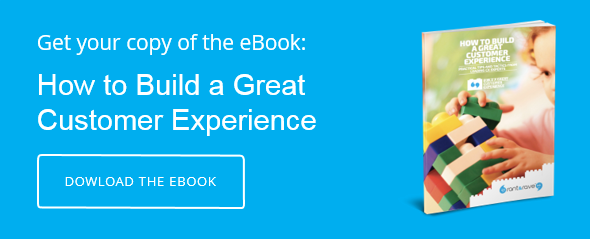 For many brands, their approach to customer retention is reactive; they wait until the customer says they’re going to leave before doing anything about it. Then, suddenly, the brand bombards the poor customer with offers and discounts and incentives – all things that weren’t on offer until they said they wanted to leave.
For many brands, their approach to customer retention is reactive; they wait until the customer says they’re going to leave before doing anything about it. Then, suddenly, the brand bombards the poor customer with offers and discounts and incentives – all things that weren’t on offer until they said they wanted to leave.
Surely there has to be a better way, for both brands and customers alike.
Why is customer retention so important?
Before looking at how to improve customer retention, let’s think about why it’s so important. In short, a churned customer is a lost opportunity. Gartner backs this up with some crystal clear stats:
- 80% of your company’s future revenue will come from just 20% of existing customers
- It costs five times more to acquire a new customer than to keep an existing one
- Reducing churn by 5% can actually see profit increases of between 25 -125%
Improving retention and reducing churn will have a positive impact on revenue and profitability. So what steps can you take to see these numbers improve in your organisation? Here are three ways you can start to make a difference.
#1 Use Proactive Comms to keep your customers in the know

There’s nothing worse for a customer than being left in the dark. And, if they don’t know what’s happening, then they’re likely to try and find out by calling your contact centre for an update.
The problem here is two-fold: it’s frustrating for your customers because they have to do all the hard work and it takes up valuable resources in your contact centre.
Proactively communicating with customers to let them know what’s happening means you can give them the information they need before they need to ask you about it. Answering common questions like “When is my order due?” and “What time is the appointment?” means you can make the whole process much smoother.
It results in freed up resource in your contact centre and reduces customer effort. So it means that you can focus your resources on more complex queries and your customers are happy that everything is progressing, as it should.
#2 Uncover why your customers leave by asking for real-time feedback

Hand on heart; do you know the most common reasons why your customers leave you? Understanding the reasons behind their decision means you can do something about and, potentially, stop them from wanting to leave altogether.
Proactively ask your customers for feedback throughout their journey, so you can prevent any niggles from turning into a major headache. By asking them for feedback in their own words, they can tell you exactly how they think and feel about your brand.
From this you can quickly see which customers are currently dissatisfied and work with them to fix their problems, turning Ranters into Ravers.
#3 Use feedback to turn words into action
If the feedback you get from customers brings up recurring problems, then you can use this information to make a difference. Take action to resolve the problem and then communicate back to your customers what you’ve done. This not only shows that you listen to what they have to say, but also that you’re willing to change.



